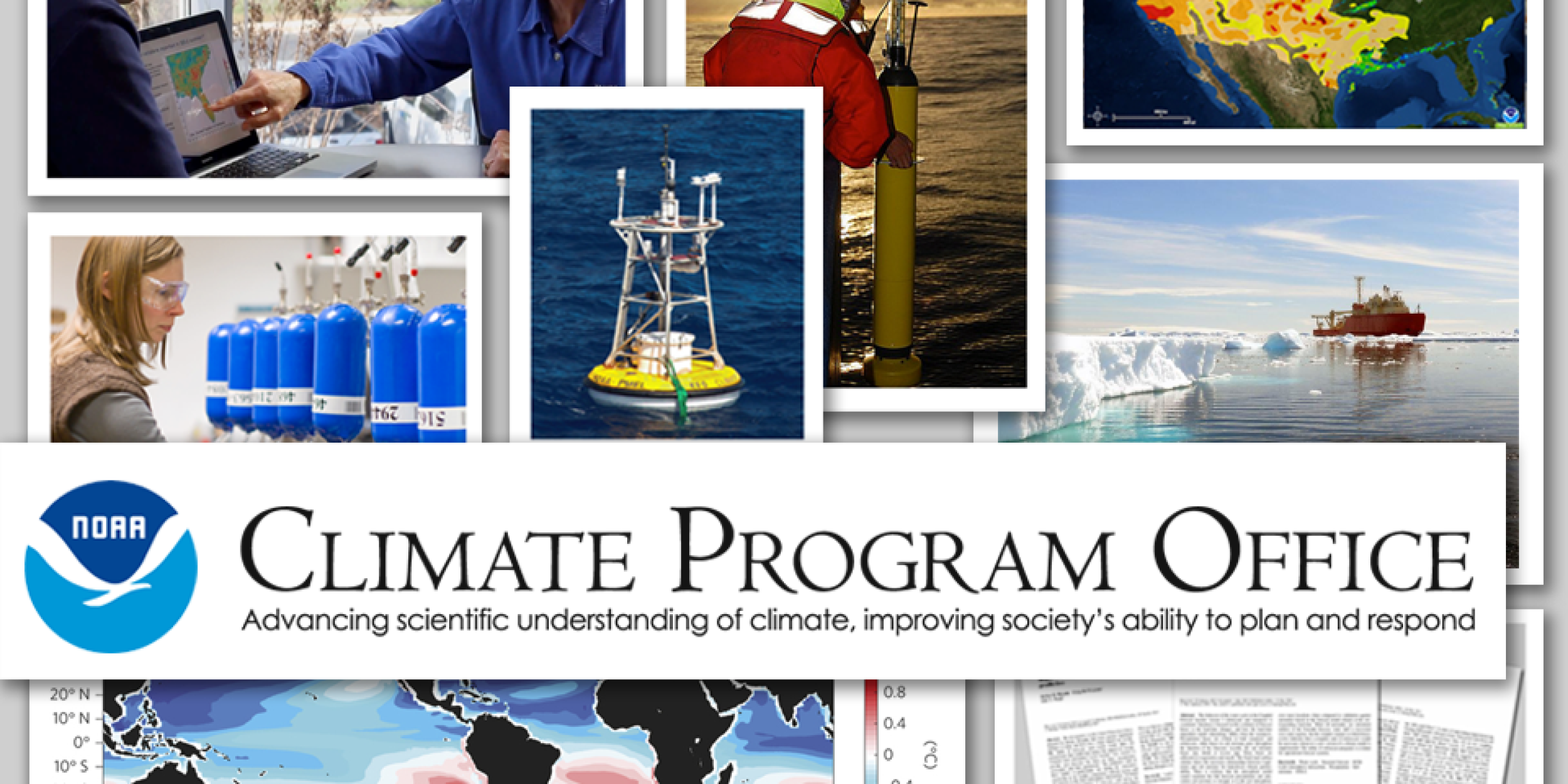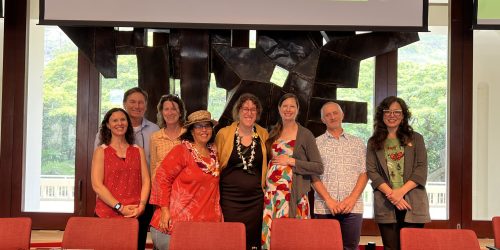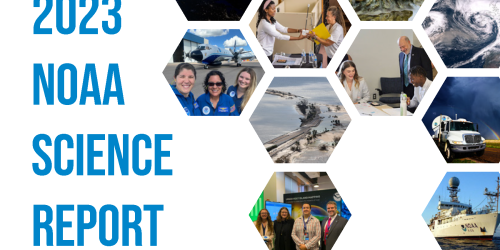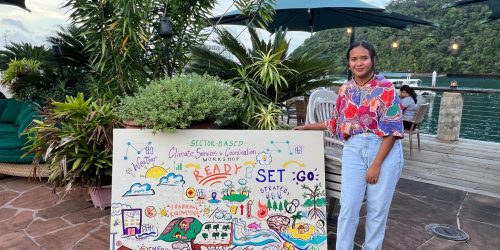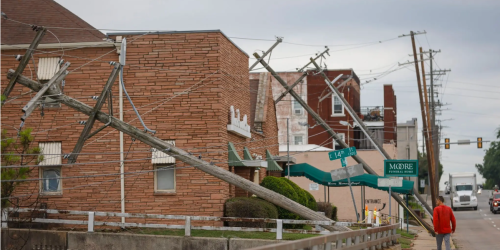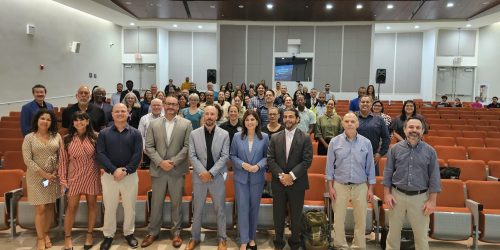In 2014, NOAA’s Climate Program Office, led by Director Wayne Higgins, went through the process of rearticulating its mission, vision, and unique value through the development of the CPO Strategic Plan. The office also made major progress on an Implementation Plan that provides a roadmap to achieving important outcomes in climate science.
These accomplishments were just one of the highlights of a productive year for NOAA CPO, which continued to make advances in climate observation, research, modeling, and decision support activities for society. We also moved forward with global observations, advanced modeling and prediction capabilities, coastal resilience, drought monitoring and decision-support services, and so many other activities that will help people, businesses and ecosystems thrive in the face of climate and its impacts.
Observing the Climate System
NOAA joins with Princeton and other institutions in six-year study to help public better understand Southern Ocean
Princeton University, NOAA and eight other partner institutions now seek to make the Southern Ocean better known scientifically and publicly through a $21 million program that will create a biogeochemical and physical portrait of the ocean using hundreds of robotic floats deployed around Antarctica and an expanded computational capacity. The Southern Ocean Carbon and Climate Observations and Modeling program, or SOCCOM, is a six-year initiative headquartered at Princeton and funded by the National Science Foundation’s Division of Polar Programs, with additional support from the NOAA and NASA. The U.S. Argo program will play a major role in the project.
Deep Argo floats deployed in Pacific
In mid-June, the Research Vessel Tangaroa, operated by New Zealand’s National Institute of Water and Atmospheric Research, set off from Wellington, New Zealand, for the Deep Argo Development cruise. The primary objectives of the cruise were (1) to deploy two prototype Deep Argo (6,000 meter plus) floats and (2) undertake deep (~5500m) CTD casts for sensor testing and development. In addition, 6 SOLO2 Argo (2,000 meter) floats were deployed in transit, finally, to make a “virtual field trip” for school uptake. The SOLO2 floats and the Deep Argo floats were provided by Scripps Institution of Oceanography as part of NOAA’s Argo Program.
Advancing our Understanding of the Climate System
Developing the Next-Generation CFS
NOAA’s Climate program Office continued to move forward with advancing modeling and prediction capabilities. Along with the National Centers for Environmental Prediction (NCEP), the office co-organized a topical collection of papers presented at a 2012 workshop held to evaluate progress in Climate Forecast System version 2 (CFSv2) performance. CFSv2 is a couple global climate model used to simulate intraseasonal-to-interannual climate variability. CPO sponsored research significantly contributed to the development of CFSv2. This collection of papers should provide insight for the development of the next generation CFS.
Researchers offer new insights into predicting future droughts in California
A report from the NOAA Drought Task Force, organized by the Modeling, Analysis, and Predictions, and projections (MAPP) Program of NOAA’s Climate Program Office, contributed to a growing field of science-climate attribution–where teams of scientists aim to identify the sources of observed climate and weather patterns. According to the study, natural oceanic and atmospheric patterns are the primary drivers behind California’s ongoing drought. Further studies on these oceanic conditions and their effect on California’s climate may lead to advances in drought early warning that can help water managers and major industries better prepare for lengthy dry spells in the future.
Understanding aerosol processes using measurements collected from field campaigns
A paper published in the Journal for Atmospheric Chemistry and Physics quantified the performance of the Weather Research and Forecasting regional model with chemistry (WRF-Chem) in simulating the spatial and temporal variations in aerosol mass, composition, and size over California using the extensive meteorological, trace gas, and aerosol measurements collected during the California Nexus of Air Quality and Climate Experiment (CalNex) and the Carbonaceous Aerosol and Radiative Effects Study (CARES) conducted during May and June of 2010. The scientists concluded that the combined CalNex and CARES data sets are an ideal test bed that can be used to evaluate aerosol models in great detail and develop improved treatments for aerosol processes.
Informing Society
President signs NIDIS Reauthorization Act
NOAA’s Climate Program Office played major roles in flagship climate programs, including the reauthorization of the National Integrated Drought Information System (NIDIS). On March 6, President Barack Obama signed the National Integrated Drought Information System Reauthorization Act into law in order to ensure that the federal government can provide timely, effective drought warning forecasts and vital support to communities that are vulnerable to drought. States, cities, towns, farmers, and businesses rely on tools and data from the National Integrated Drought Information System to make informed decisions about water use, crop planting, wildfire response, and other critical areas.
CPO Supports Major Assessment Reports Released in 2014
CPO’s funded scientists, projects, and program managers contributed to several major assessment reports released over the past year. Among these, the Arctic Research Program in the NOAA Climate Program Office supported the 2014 Arctic Report Card. The latest update confirmed that Arctic air temperatures continue to rise at more than twice the rate of the planet as a whole. Earlier in the year, NOAA and the American Meteorological Society released the 2013 State of the Climate report. The report, a 24-year tradition encompassing the work of 425 authors from 57 countries, uses dozens of climate indicators to track patterns, changes, and trends of the global climate system. Scientific research funded by CPO was also foundational to advancing the 2014 Third National Climate Assessment Report and the Intergovernmental Panel on Climate Change (IPCC) reports.
Climate.gov wins two Webby Awards and a People’s Voice Award
With 12,000 entries from all 50 US states and 60 plus countries and two millions votes in the Webby People’s Voice Awards, the 18th Annual Webby Awards was the biggest yet. NOAA Climate.gov was selected by the International Academy of the Digital Arts & Sciences to receive two Webby Awards in the “Government” and “Green” categories. The cross-agency team of world-class scientists, data visualizers, web developers, and science writers also garnered a People’s Voice Award in the “Green” category (placing second overall in the “Government” category).


